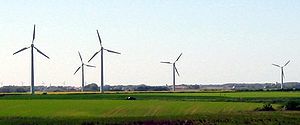
Image via Wikipedia
Studies have shown that green building gives its owner greater energy savings, increases a property’s market value, improves health and quality of life of occupants, and reduces one’s carbon footprint. Given the many benefits of green building, it makes sense for architects and their clients to opt for environmentally and economically sound building practices. So how are green buildings different from traditional buildings?
To come up with a sustainable building, green builders address four crucial areas: materials, energy, water, and health. First, green builders determine the sources and uses of building materials. They ask questions such as: Are the materials obtained from natural and renewable energy sources? How are efficient are they in reducing waste? Are they re-usable or recyclable? Examples of green building materials are bamboo wall panels and reclaimed lumber.
Next, green builders employ technologies and building designs that can lower the building’s energy use. Renewable energy technologies such as solar panels and wind turbines are integrated to allow a building to generate its own electricity and reduce its reliance on mains. Natural daylight and open air designs further reduce lighting and cooling costs. Low-energy appliances are also considered. They also make sure that the building is well-insulated to increase its HVAC efficiency (heating, ventilation, and cooling system).
Water use is minimized by installing water collecting systems and by installing water-efficient appliances such as self-closing spray taps.
Lastly, green builders use non-toxic, emission-free, and moisture-resistant materials and products. Doing so, indoor air quality and health of its occupants are improved.



















